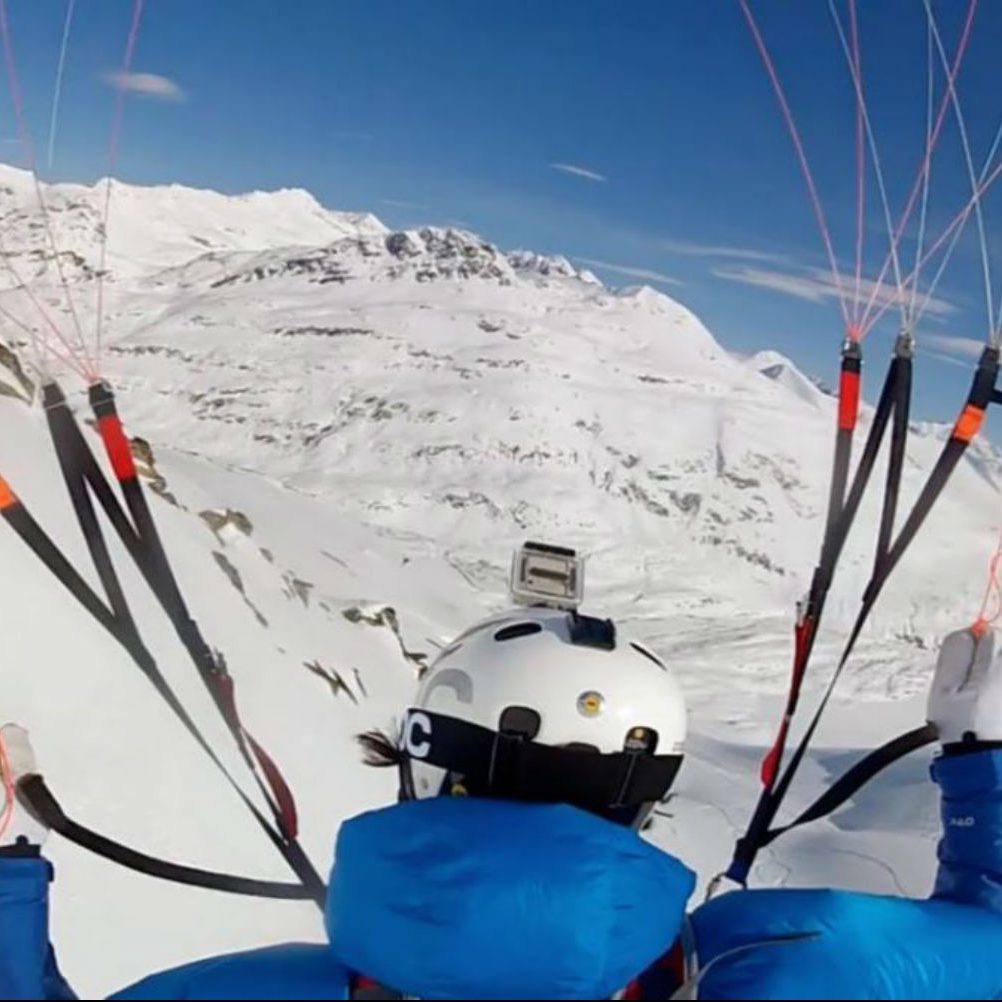

When the temperature drops during winter, people often resort to staying inside where it’s warm and cozy until the snow melts. Others enjoy some of the classic outdoor winter activities of sledding down a hill or having a snowball fight. But there are some exciting, lesser-known options that can help beat back the doldrums of winter.
It should come as no surprise that many of the wild winter activities on this list originated in countries with lots of snow and access to mountains. Many of these diversions come from countries along the Alps mountain range, such as France, Germany, and Austria. Several other activities come from chilly Scandinavian countries like Norway and Sweden.
Some activities, such as sled dog racing, were developed from activities people have been doing for thousands of years. For example, Yukigassen is essentially a large organized snowball fight. Though people have likely been chucking lumps of snow at one another for millennia, the specific rules of Yukigassen were set in Japan, so the country was credited as the home of Yukigassen.
Similarly, people in cold climates have used dogsleds to travel long before sled dog racing became an organized sport. The first organized race on record was held in Alaska, so the state is credited with the origin of sled dog racing.
Skiing and tobogganing are two of the most popular pastimes in winter, so it is hard to consider them as truly wild. However, many of the wild activities are variations on these popular sports. For example, some people choose to slide down a mountain seated on shovels or woks. Or, inventive thrill seekers go on skis pulled by dogs or snowmobiles. Some other skiers end their run down the mountain with a bungee cord jump or even a free fall that requires a parachute.
To find the wildest winter activities, 24/7 Wall St. researched the internet for extreme, unique, and bizarre activities that people do in the winter months of December, January, and February. To be considered for the list, an activity had to require either snow or some kind of winter setting.
Click here to see the wildest winter activities.
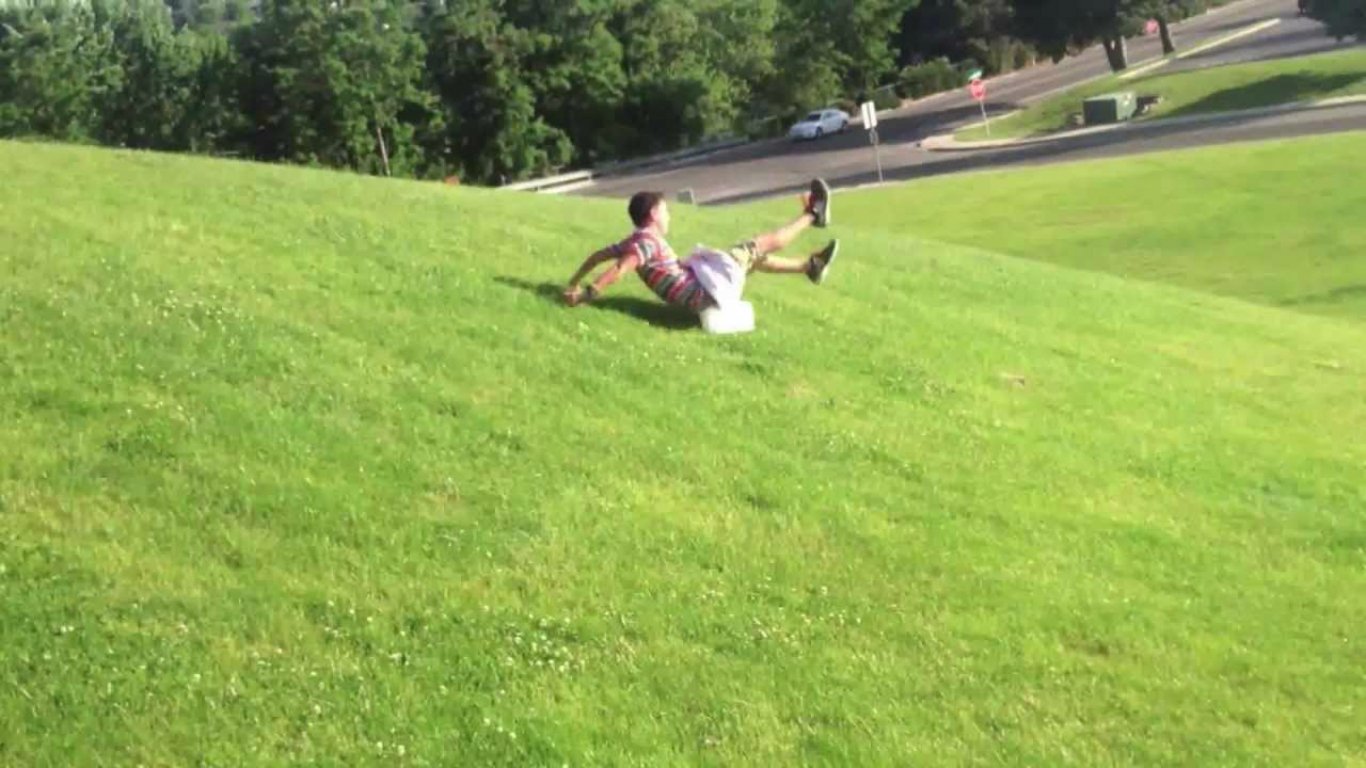
25. Ice blocking
> Where it originated: Unknown
> Equipment needed: Block of ice, towel
Ice blocking is a safe, fun winter activity that many kids have enjoyed for years. Using a big ice block as a makeshift toboggan to speed downhill can provide lots of outdoor entertainment. In addition to the large block of ice, you’ll need a towel to place on top of it — and of course a hill to slide down.
[in-text-ad]
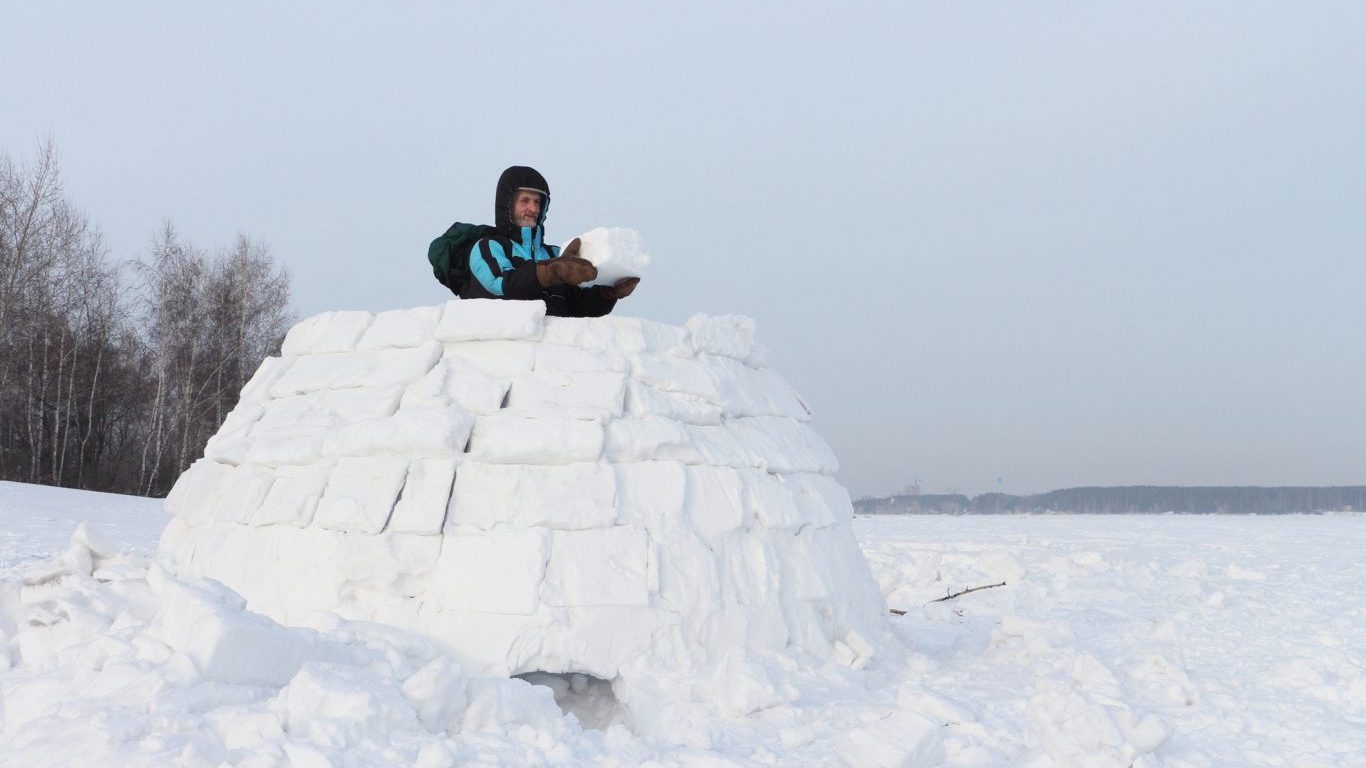
24. Igloo building
> Where it originated: Unknown
> Equipment needed: Snow
Though it likely started as a necessity for people who lived in freezing cold climates thousands of years ago, building an igloo is a fun way to spend a winter day outside. It can provide a snowy hangout that protects you from the bitter winter winds or an ideal fortress during a snowball fight.
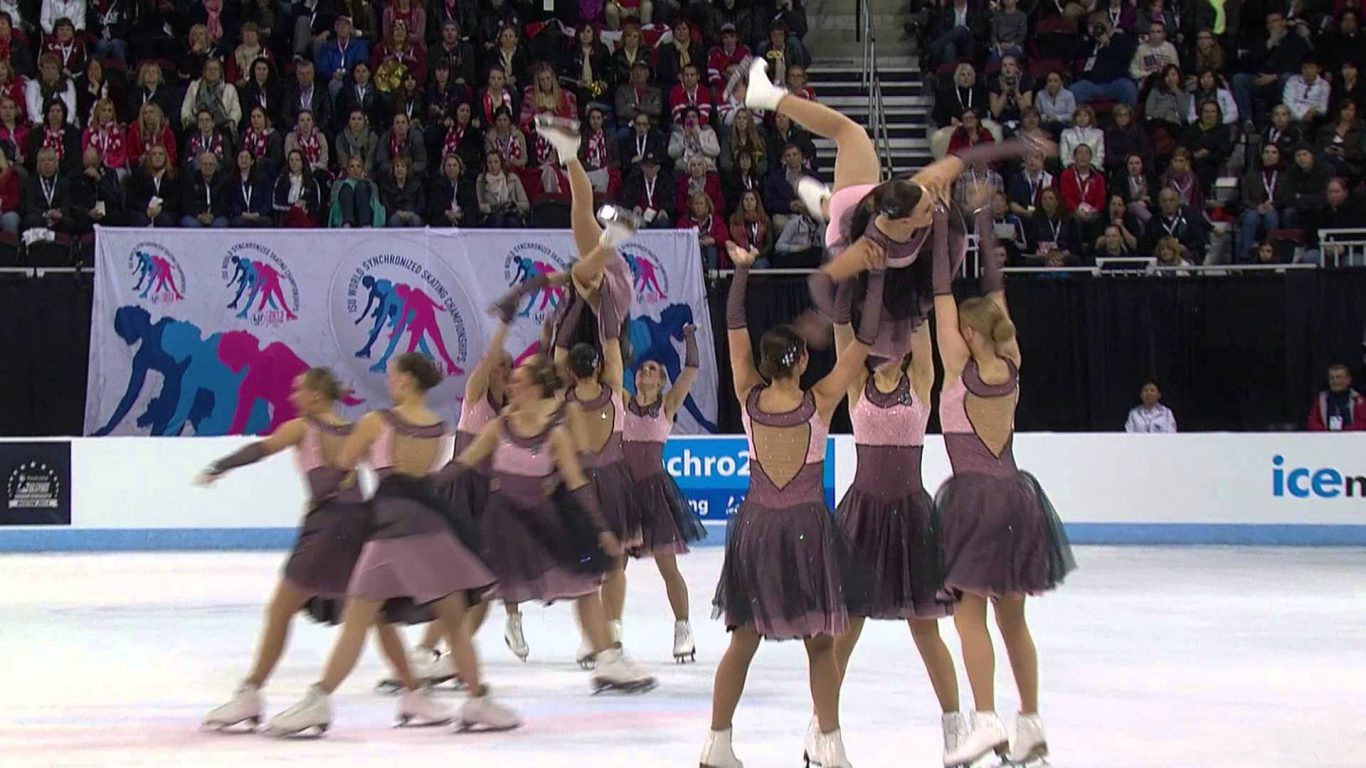
23. Synchronized skating
> Where it originated: Michigan
> Equipment needed: Skates, teammates
Figure skating is a fairly common winter pastime, but people may have forgotten that synchronized skating was an Olympic demonstration sport only in 2002. The sport has teams of up to 20 skaters performing a routine.
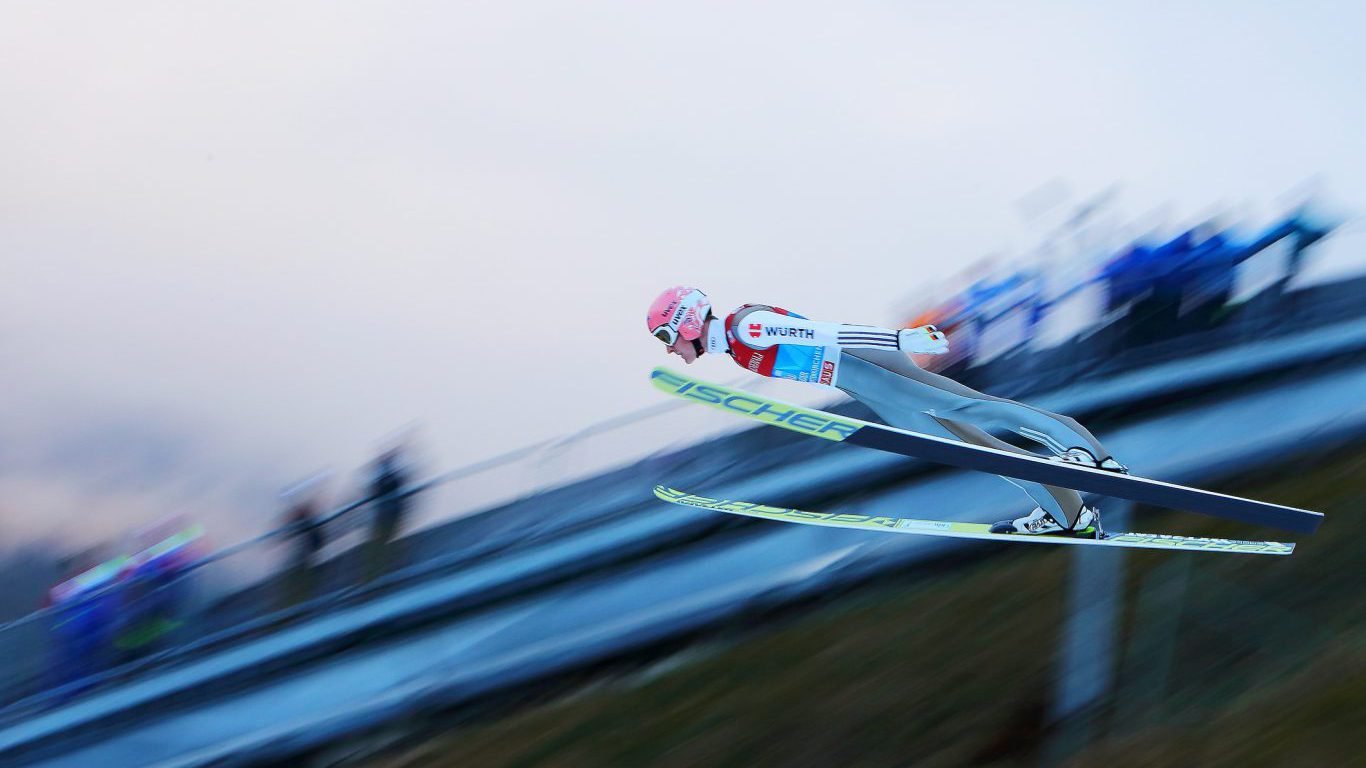
22. Ski jumping
> Where it originated: Norway
> Equipment needed: Skis, helmet
We may be used to seeing ski jumping during the Winter Olympics, but that doesn’t make it any less daunting and dangerous. Athletes ski down massive ramps and launch themselves hundreds of feet down the course.
[in-text-ad-2]
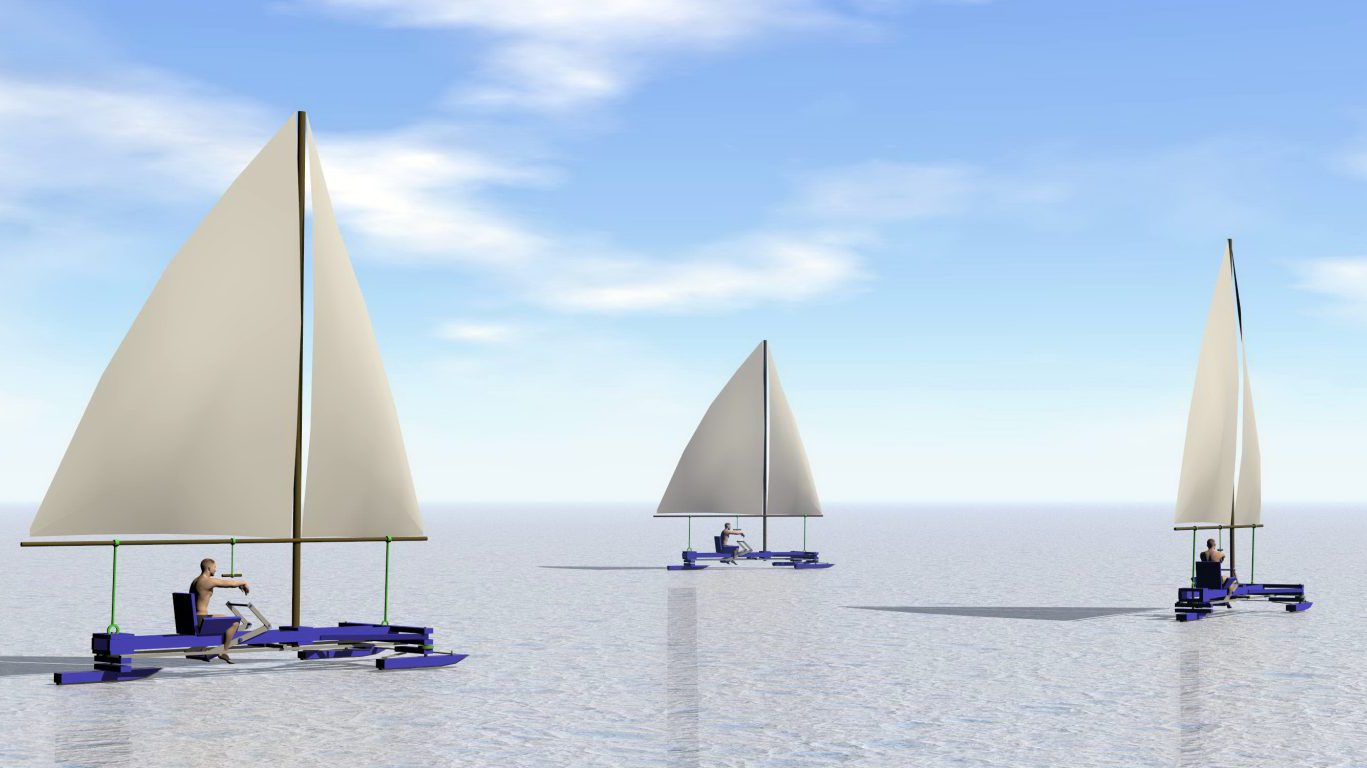
21. Ice sailing
> Where it originated: The Netherlands
> Equipment needed: Ice boat
Ice sailing, also known as ice boating or ice yachting, proves that water doesn’t have to be in liquid form for people to sail on it. Likely invented by Dutch sailors to transport goods, people nowadays go ice sailing by putting steel runners on the bottom of wooden boats and using sails to catch winter winds and propel them across frozen lakes at more than 40 mph.
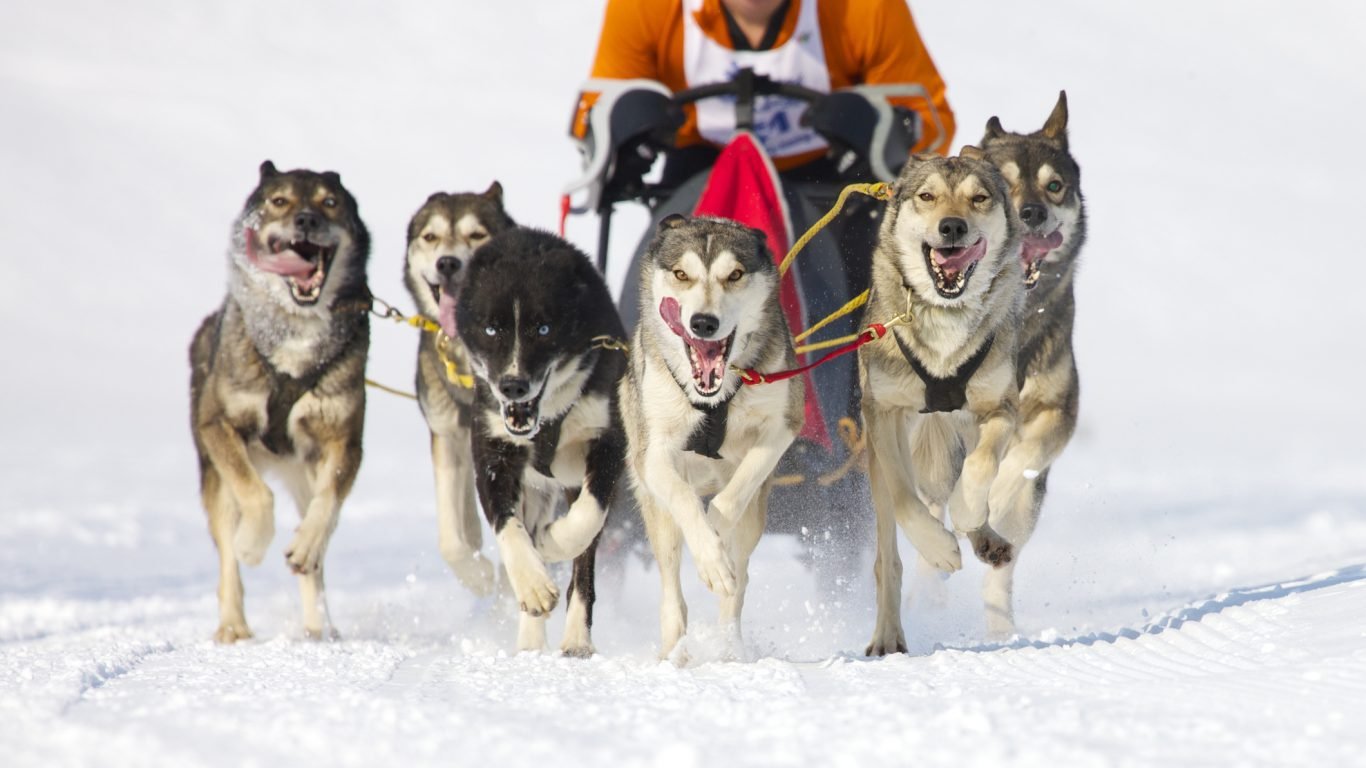
20. Sled dog racing
> Where it originated: Alaska
> Equipment needed: Dogs, sled
Though many people have heard of the Iditarod sled dog race, it was actually preceded by the All Alaska Sweepstakes, which is the world’s oldest organized sled dog race on record. Though trails have changed and lengthened over the years, the core idea of a sled, a team of dogs, and a musher covering as much ground as they can has remained the same.
[in-text-ad]
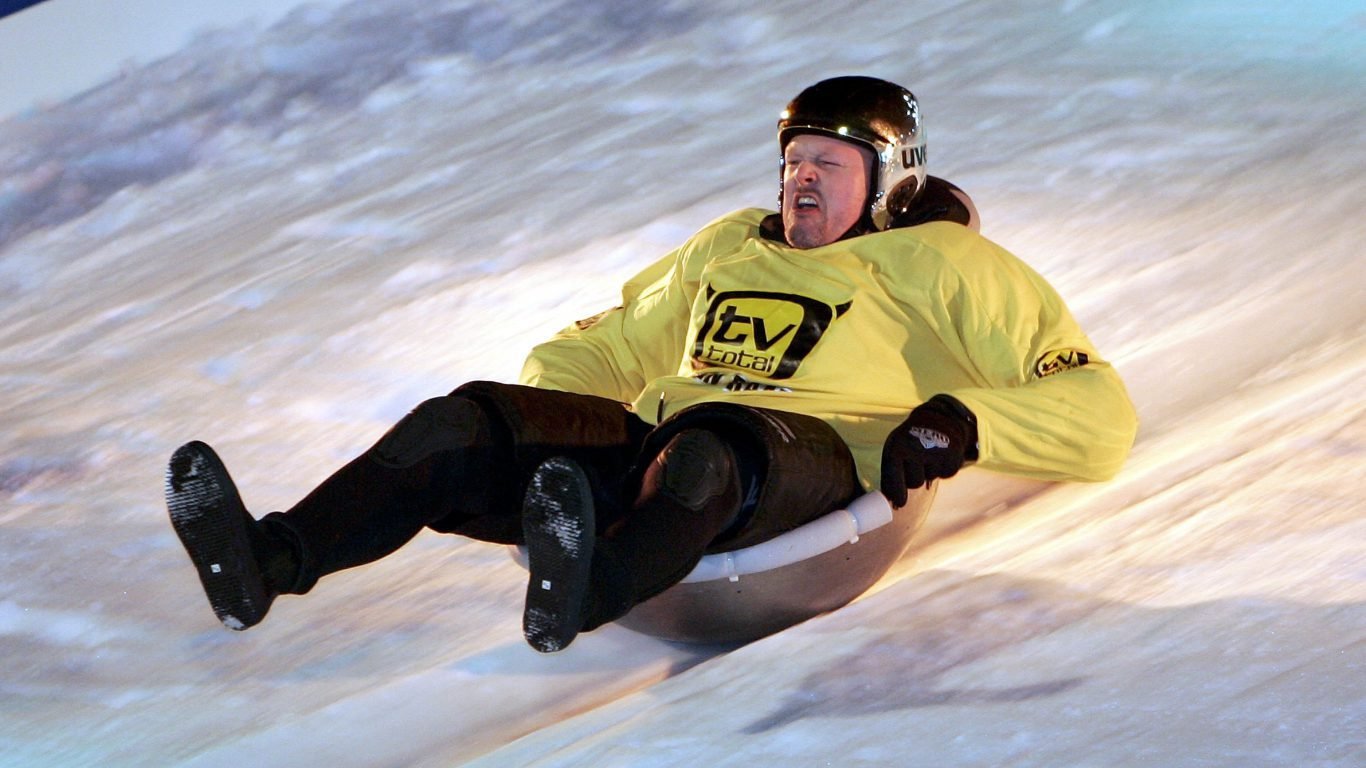
19. Wok racing
> Where it originated: Germany
> Equipment needed: Wok
Thrill-seekers will use just about anything they can to slide down a hill as quickly as possible — but a cooking wok might be one of the strangest. The sport of wok racing, in which competitors slide down a luge or bobsled track on the cooking pot, was originally invented as a joke on a German TV show. It has since gained popularity and even has officially sanctioned races.
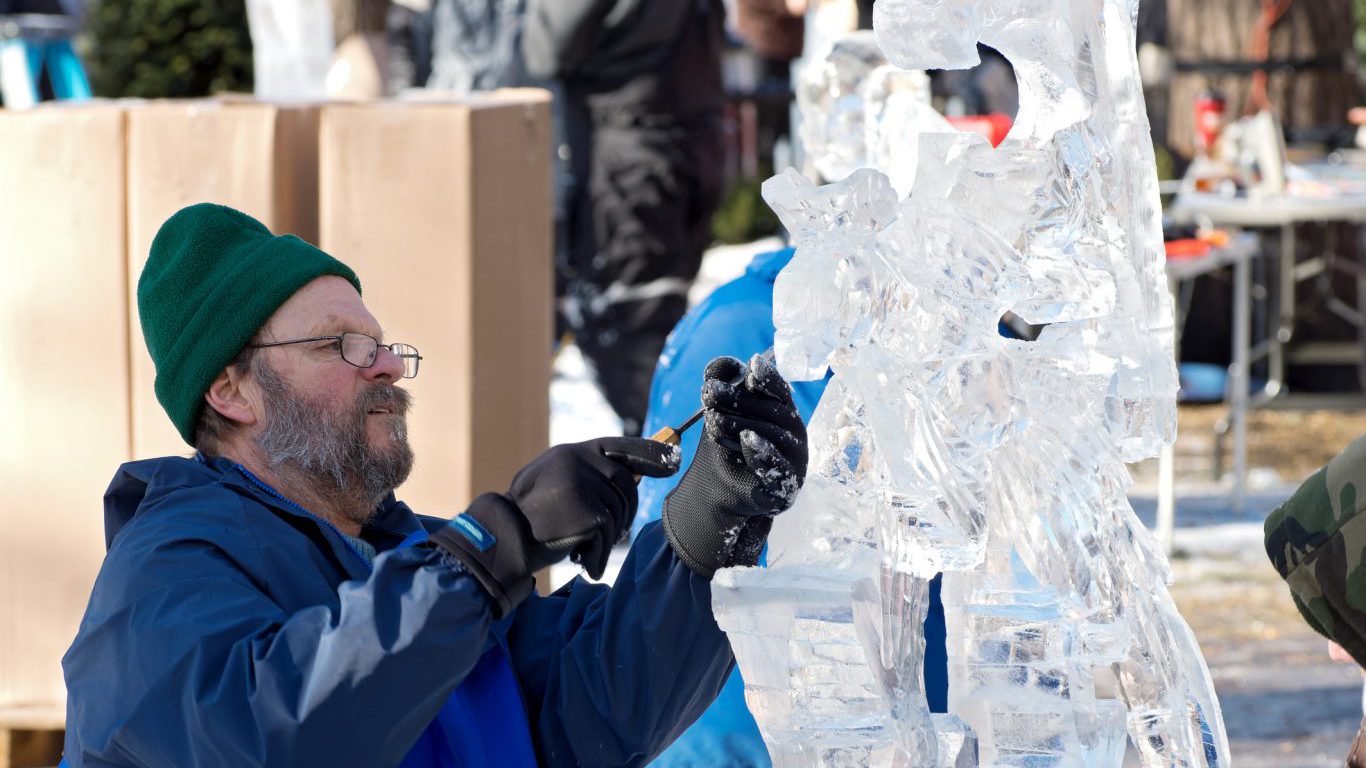
18. Ice sculpture carving
> Where it originated: China
> Equipment needed: Block of ice, chainsaw, grinder, chisel
With snow-dusted streets over some parts of the world, many people are dazzled by the beauty of winter. Others use the cold weather as an opportunity to make art of their own. Ice sculptors create dazzling works of art by sawing, grinding, and chiseling ice into ornate sculptures of people, animals, and just about anything else you could imagine.
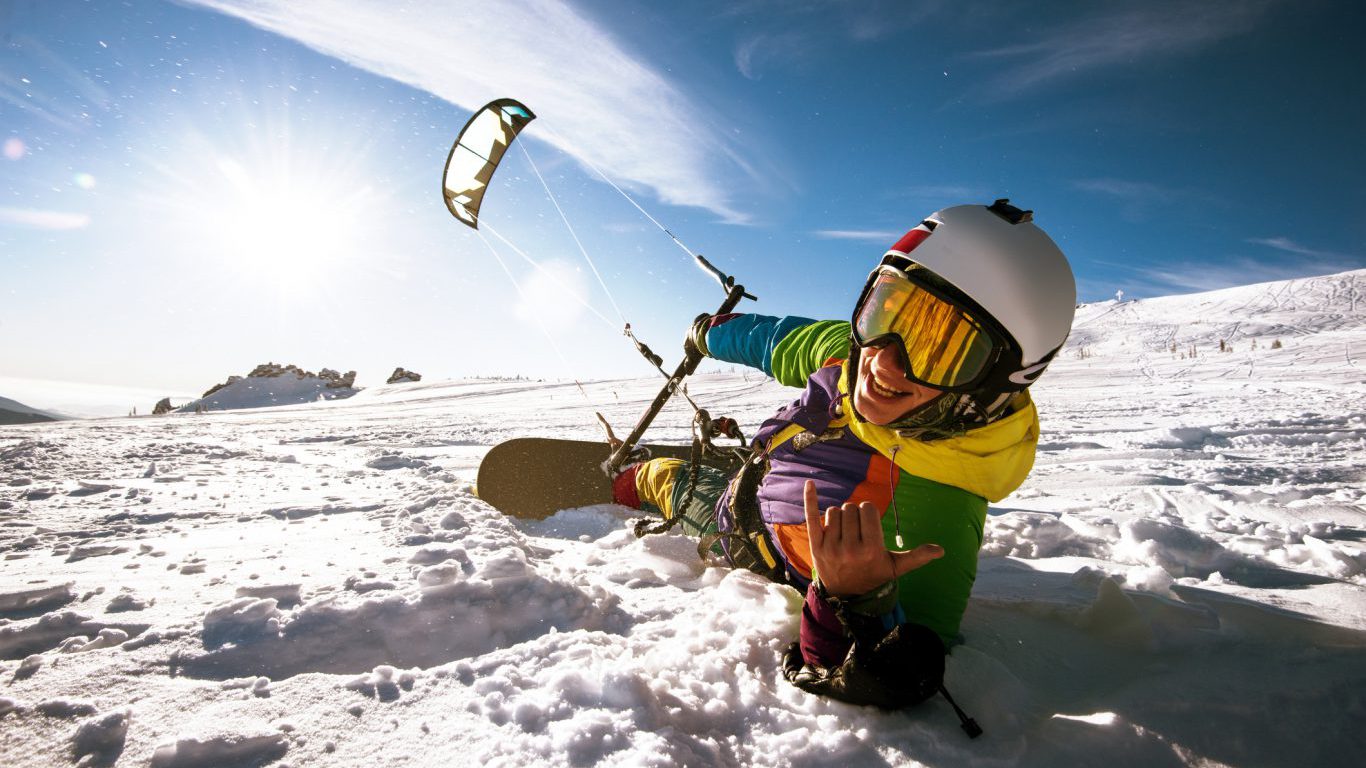
17. Snowkiting
> Where it originated: Germany
> Equipment needed: Kite, skis or snowboard
Like ice sailing, snowkiting utilizes the wind to pull people along snow and ice. However, snowkiters glide along on their own two feet on either skis or a snowboard. Snowkiting was initially developed in Germany in the 1970s but gained popularity in France years later.
[in-text-ad-2]
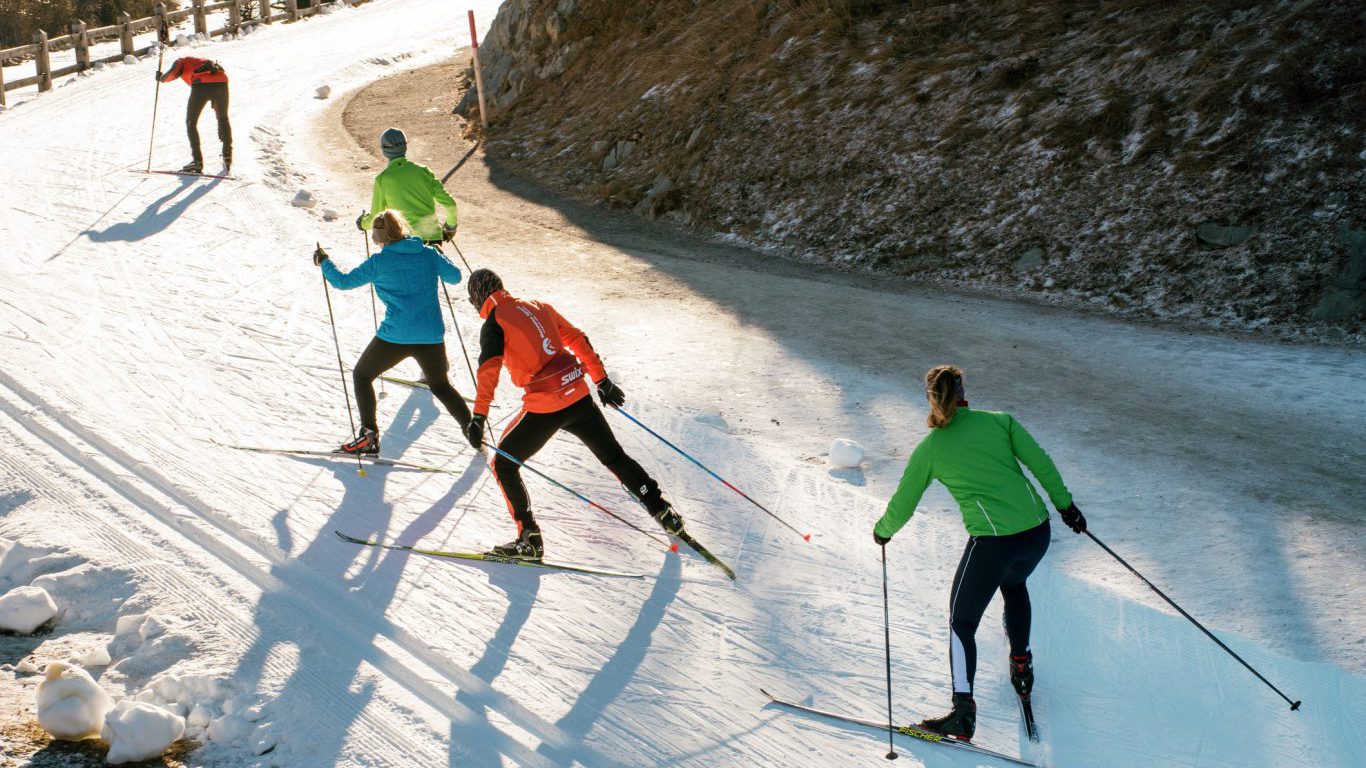
16. Winter pentathlon
> Where it originated: Norway
> Equipment needed: Skis, rifle, fencing sword, horse
The winter pentathlon is like the biathlon on steroids. The biathlon has just two events: skiing and shooting. The winter pentathlon has five. Competitors are required to participate in cross-country and downhill skiing, target shooting, fencing, and horseback riding.
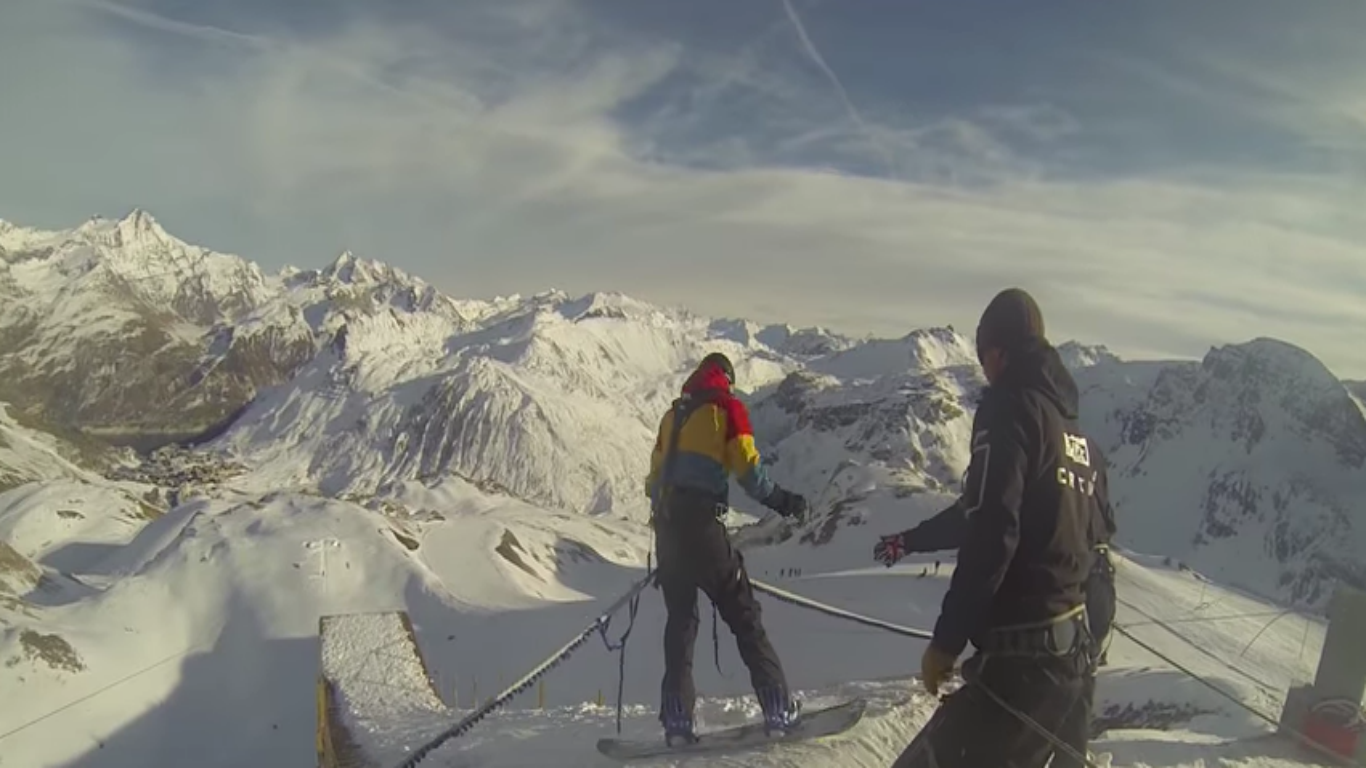
15. Ski bungee jumping
> Where it originated: France
> Equipment needed: Skis, bungee cord
If bungee jumping isn’t enough of an adrenaline rush for you, you can always try ski bungee jumping. Riders can take their skis, snowboard, or even a sled down a 98-foot ramp before plunging over the edge of a mountain as a bungee cord stops the fall. It appears that the Tignes ski resort in France is the only place to go ski bungee jumping.
[in-text-ad]
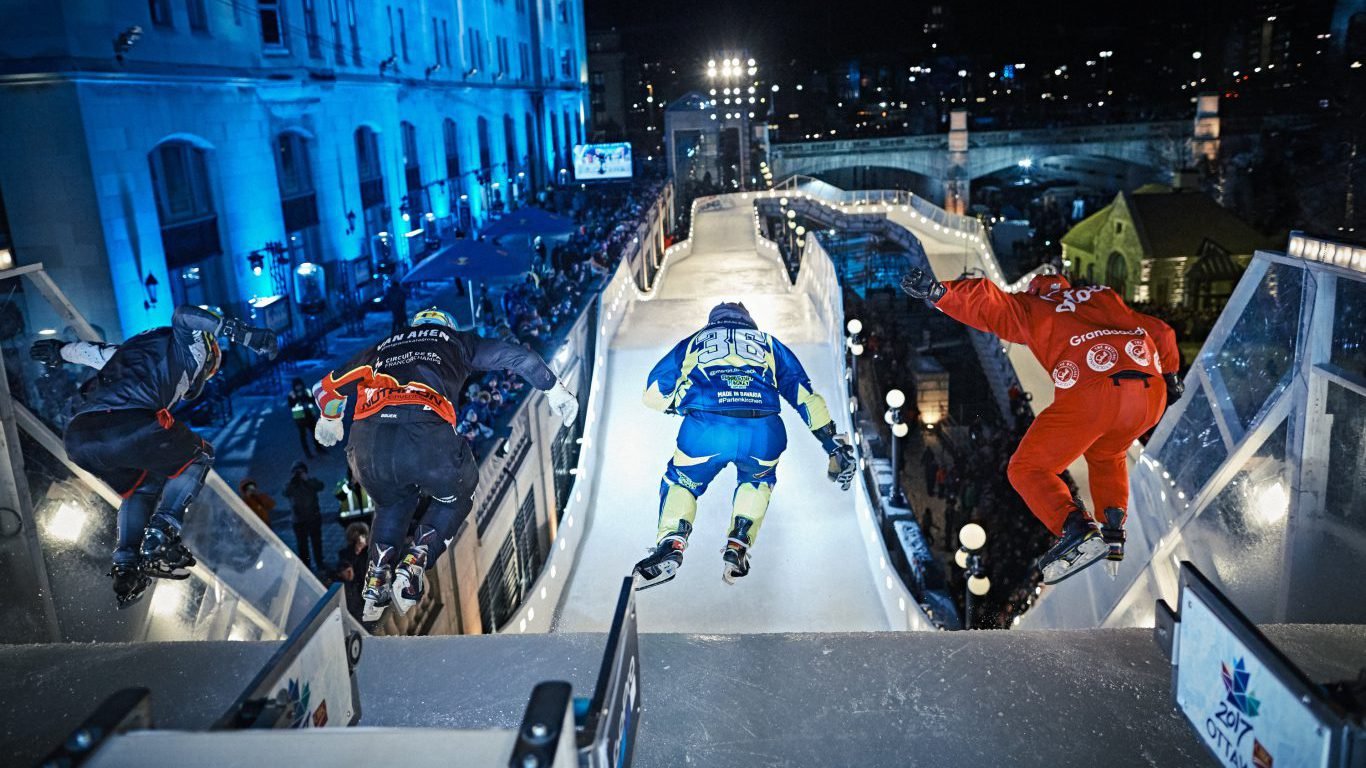
14. Crashed Ice/Ice cross downhill
> Where it originated: Sweden
> Equipment needed: Skates, pads, helmet
Ice cross downhill, or Crashed Ice, is one of the newer and more dangerous winter sports. Skaters go as fast as they can down hills, over jumps, and around tight turns. With speeds surpassing 40 mph, the sport earns the name crashed ice as competitors struggle to make it through the entire race upright.
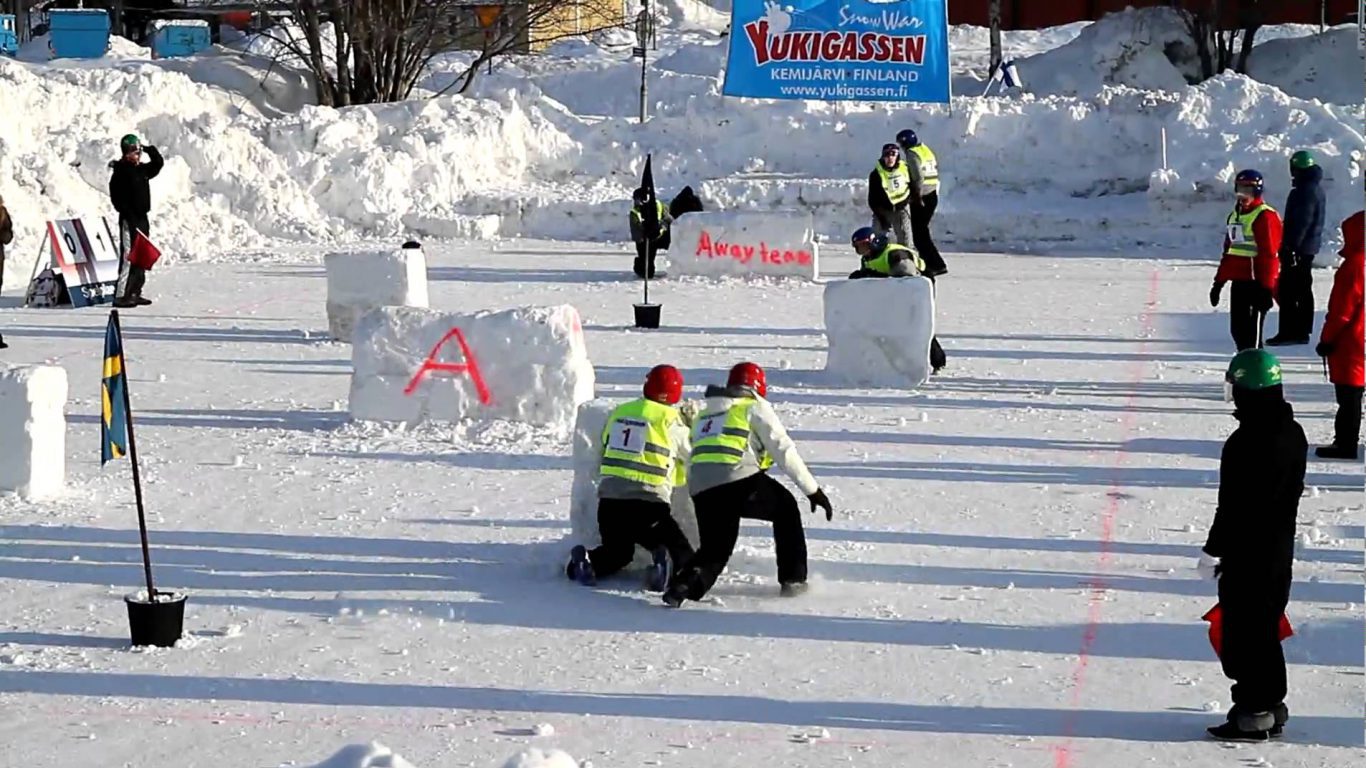
13. Yukigassen
> Where it originated: Japan
> Equipment needed: Team flag, helmet, gloves, snowball maker
Yukigassen takes the childhood snowball fight and turns it into a full-on battle. Teams try to eliminate other players by pelting them with snowballs or capturing the opposing team’s flag by the end of a three-minute set. Players even get to use a special snowball maker to speed up the process of gathering and packing snow.
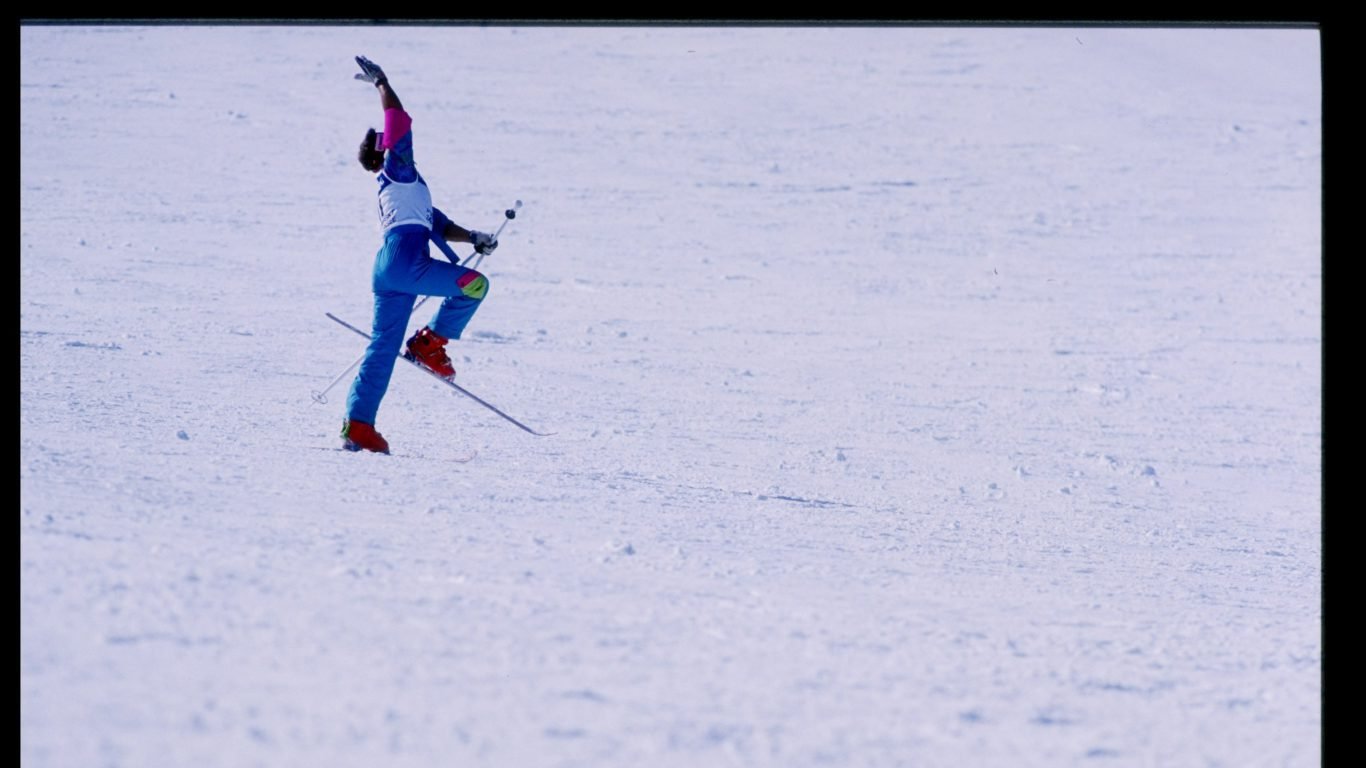
12. Ski ballet
> Where it originated: New Hampshire
> Equipment needed: Skis
Ski ballet, as you might expect, combines elements of ballet and other dances with skiing to create a unique sport. The sport developed a fairly large following in the 1970s and held several competitions. However, it was poorly received as a demonstration sport in the 1988 Olympics, and its popularity quickly waned afterwards.
[in-text-ad-2]

11. Skijoring
> Where it originated: Scandinavia
> Equipment needed: Skis, horses or dogs
If you love the thought of flying by the countryside on skis, but don’t want to do any of the work yourself, skijoring may be for you. Skijoring is a competition where dogs or horses pull skiers along the snow as quickly as they can. Some variations of skijoring have popped up over the years where participants added jumps or tricks to their run.
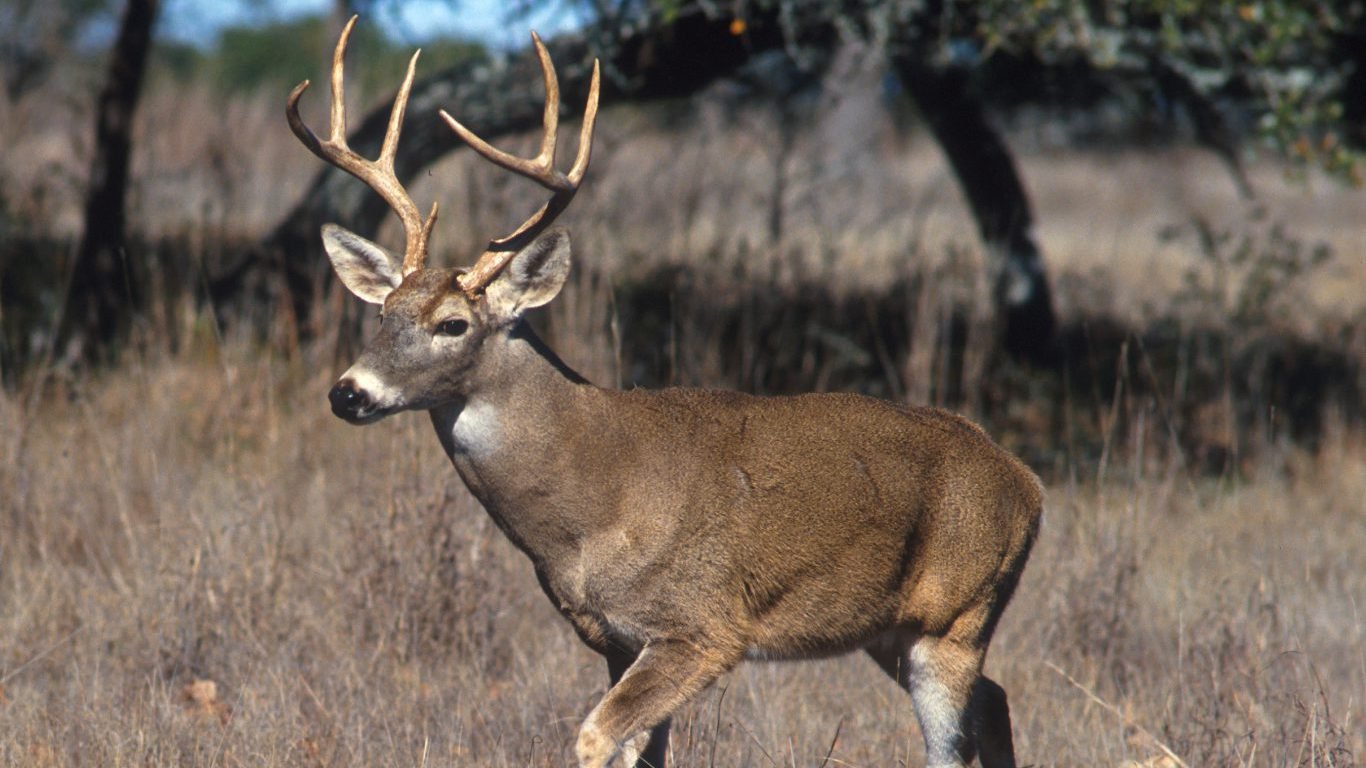
10. Deer hunting
> Where it originated: Unknown
> Equipment needed: Gun, crossbow or bow and arrow
Though some people may be opposed to hunting, there is no arguing that hunting deer is certainly a wild way for people to spend part of their winter. Though it likely began as a means for survival, hunters now have a small window in which they can hunt the large mammals, and that time often comes in the winter.
[in-text-ad]

9. Polar bear swims
> Where it originated: Unknown
> Equipment needed: Swimsuit
It may sound like one of the worst things to do in cold weather, but each year thousands of people jump into lakes, rivers, and oceans in the dead of winter. Polar Bear Plunges, as they’ve come to be known, are a New Year’s tradition in many cold weather areas all over the world. Many Polar Bear Plunges are for a good cause, raising money for local charities.
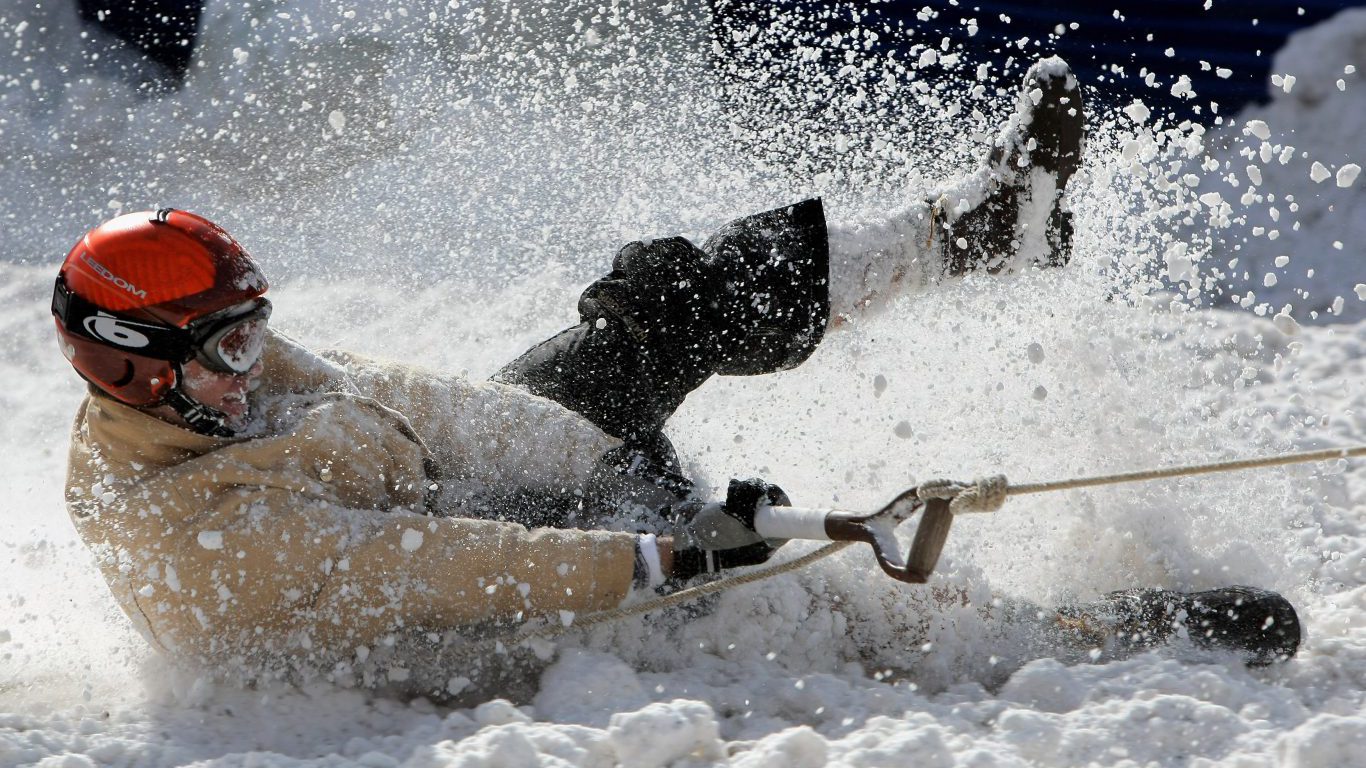
8. Shovel racing
> Where it originated: New Mexico
> Equipment needed: Metal grain shovel, helmet
Shovels aren’t just for moving snow. Some inventive New Mexico residents decided to use them to slide downhill and even race them against one another. Shovel racing eventually became so popular it even made it into the first X Games in 1997. However, after a racer was injured in a wreck, the sport never made it back into the games.
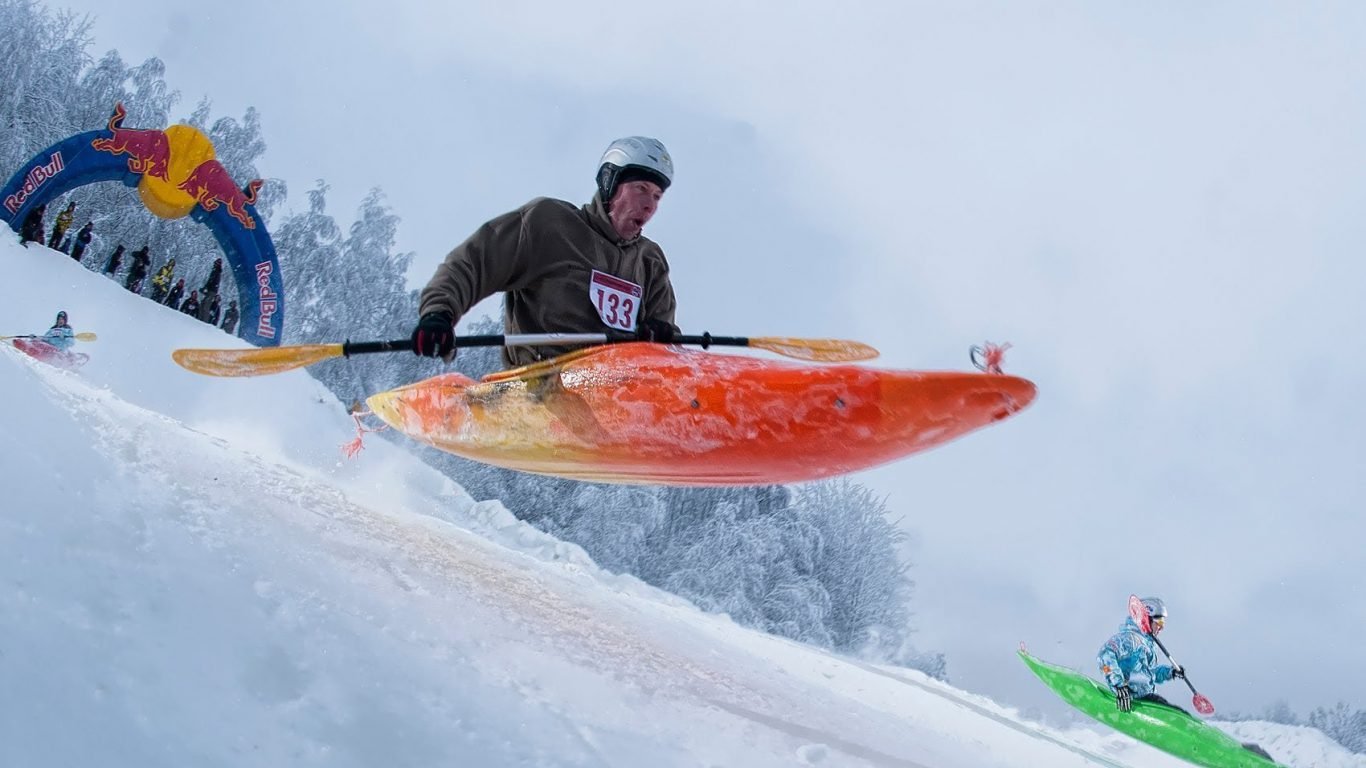
7. Snow kayaking
> Where it originated: Austria
> Equipment needed: Kayak, paddle, helmet
Snow kayaking is yet another example that shows people will use just about anything they can to get down a hill at high speeds. Snow kayakers certainly go down hills much faster than normal water kayakers float down rivers. Snow kayakers can reach speeds of more than 35 mph.
[in-text-ad-2]
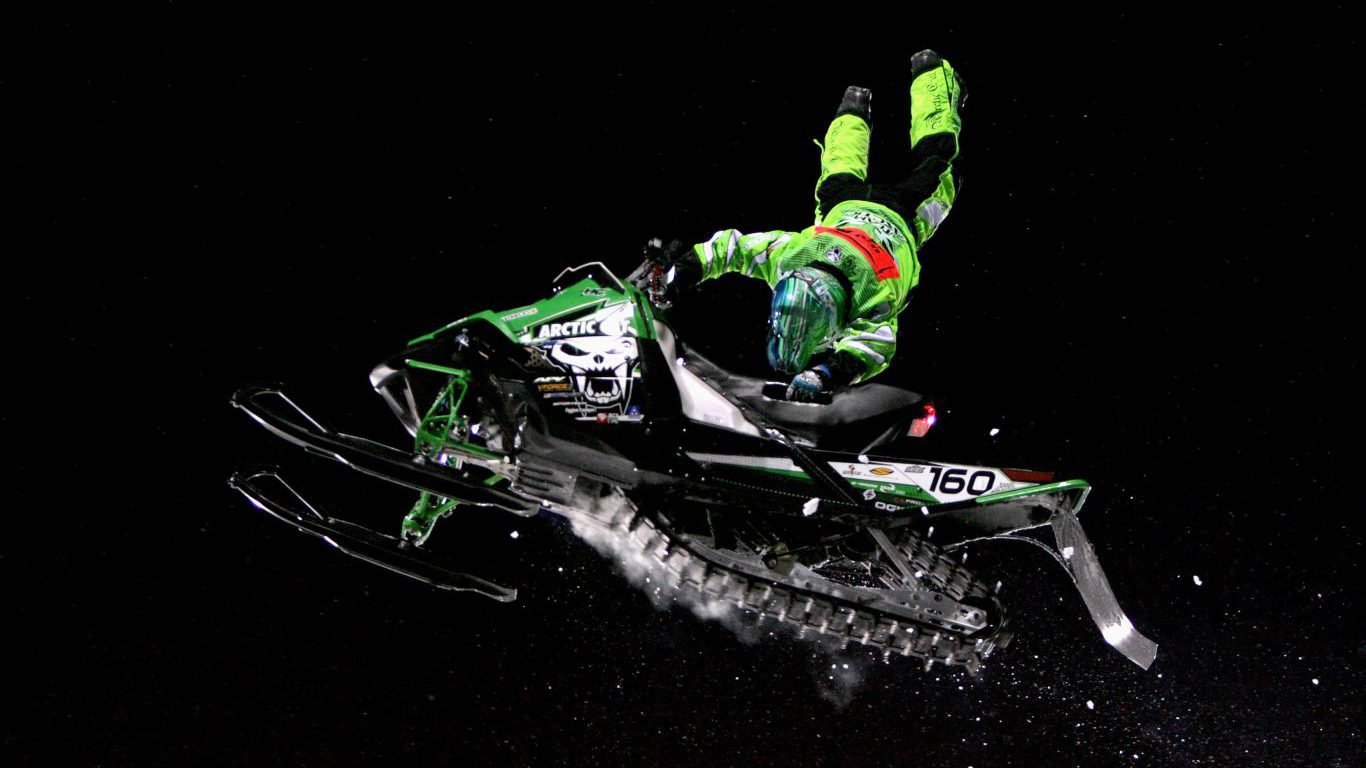
6. Snowmobile Speed and Style
> Where it originated: Colorado
> Equipment needed: Snowmobile, helmet
Snowmobile Speed and Style is the perfect sport for winter daredevils and a popular X Games event. Competitors take their snowmobiles around a track as fast as they can, while also throwing in gravity-defying stunts on big jumps. Winners are selected based on a combination of their speed and stunts.

5. Arctic Man (Snowmobile-pulled ski race)
> Where it originated: Alaska
> Equipment needed: Skis, snowmobile with driver, towline
Described as Alaskan Burning Man, Arctic Man is an event centered around a unique 5.5-mile race that originated as a drunken bet. A skier or snowboarder zooms down a mountain before grabbing a tow rope attached to the back of a snowmobile. The snowmobile drags the racer to a jump at over 80 mph, before the skier makes the leap and heads to the finish line.
[in-text-ad]
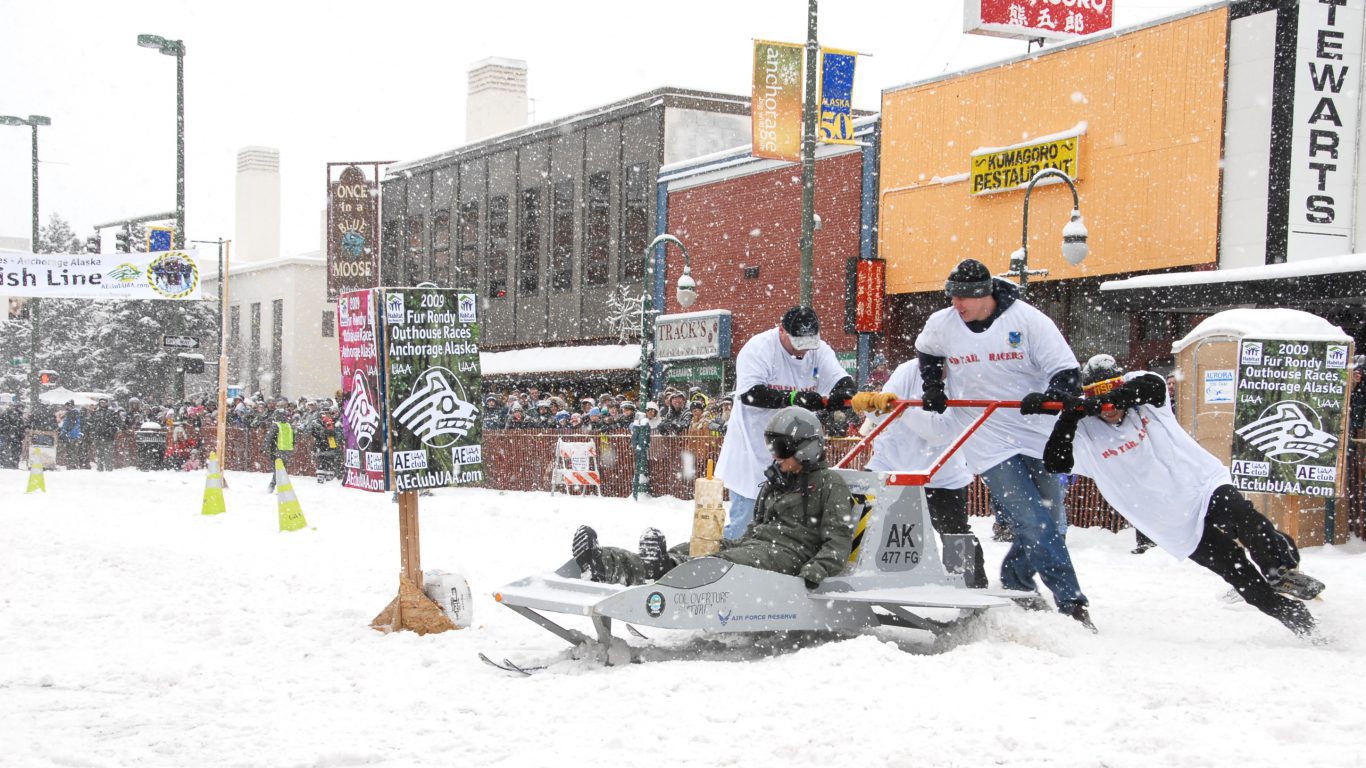
4. Outhouse races
> Where it originated: Alaska
> Equipment needed: Custom built outhouse, helmet, teammates, roll of toilet paper
What the Anchorage, Alaska outhouse race lacks in speed, it makes up for in creativity in potty humor (the official website tells competitors “don’t be no. 2 in this race to the finish!”). The race is part of a festival called the Fur Rendezvous that dates back to the 1930s. Outhouse race rules require one person to sit on the custom built outhouse while teammates push them along the course. The outhouse also has to have at least one roll of toilet paper on it.
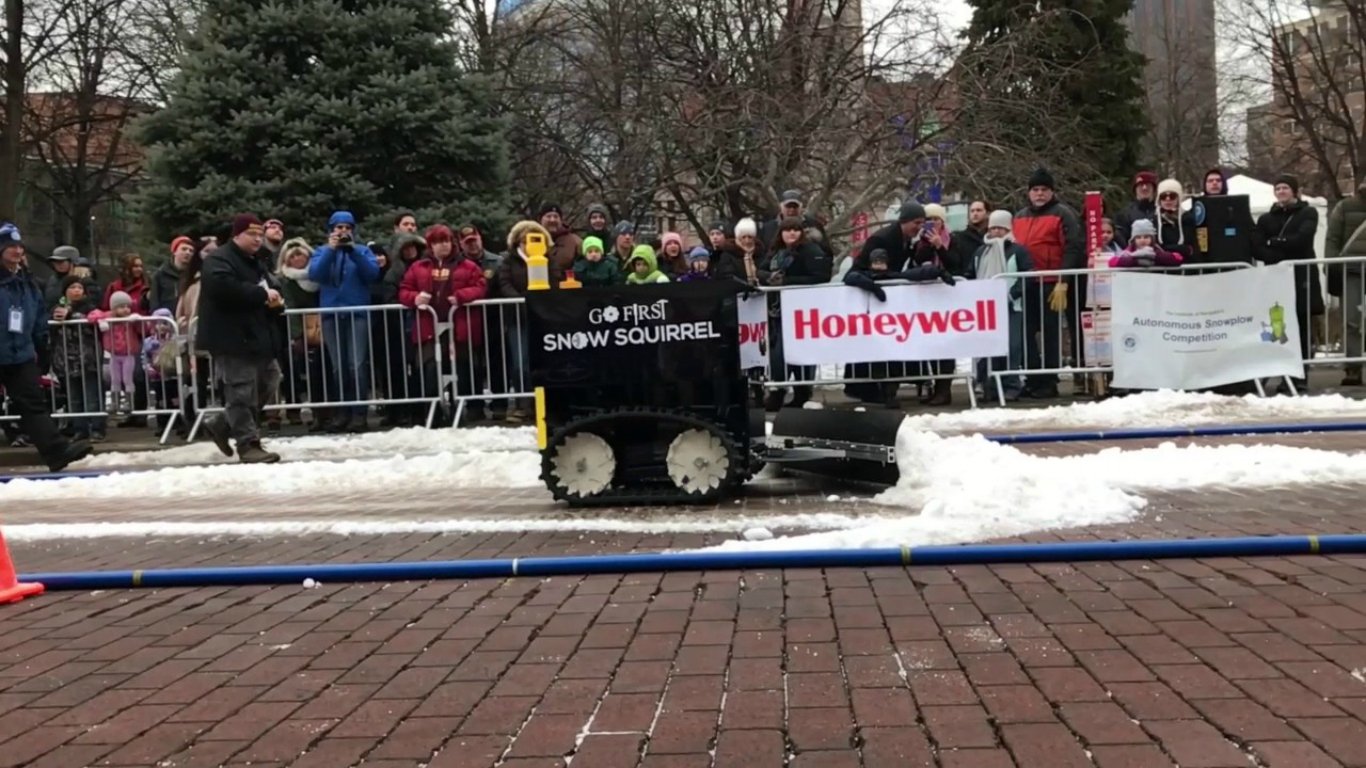
3. Autonomous Snowplow Competition
> Where it originated: Minnesota
> Equipment needed: Custom built autonomous snow plow
The annual Autonomous Snowplow Competition celebrates the technologically gifted people among us who don’t want to go outside and shovel their driveway. Teams compete to build snow plows that are totally unmanned that clean up a designated course faster and more completely than others.
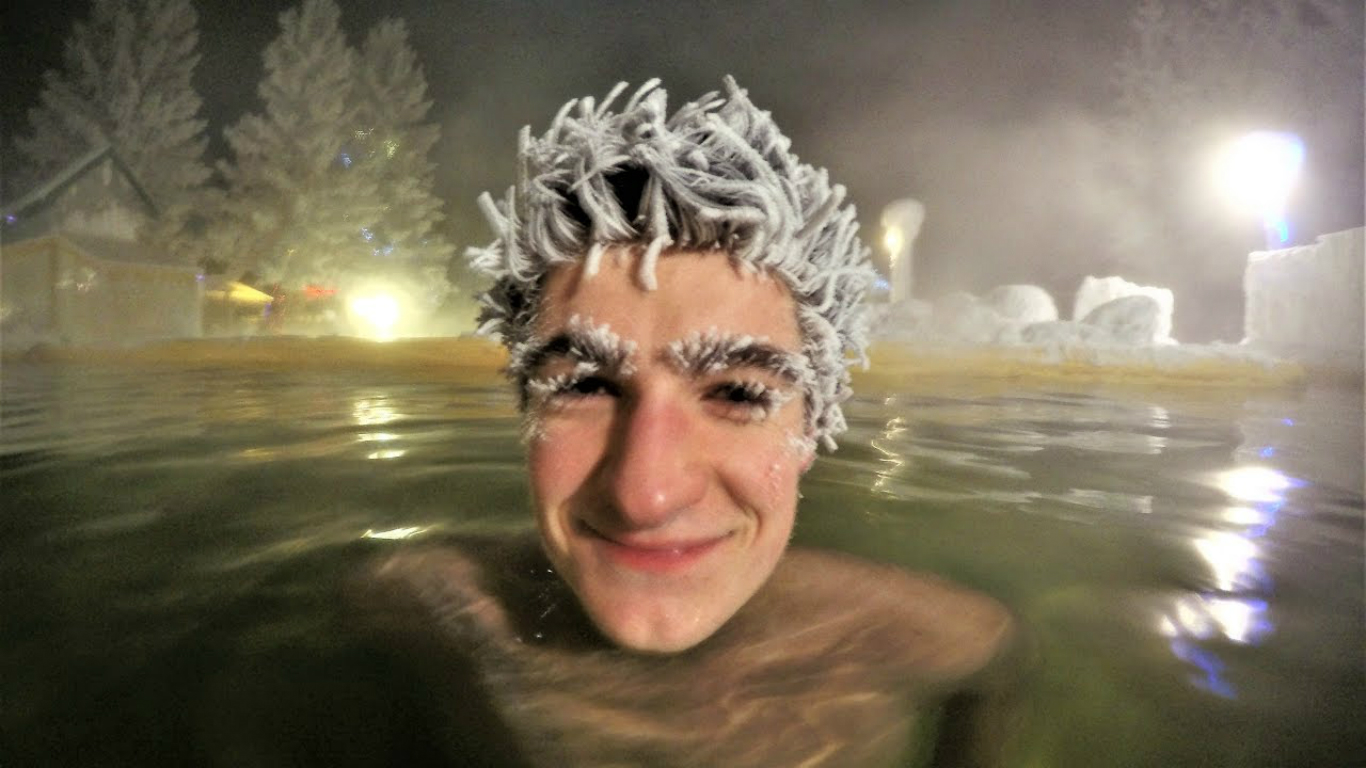
2. Hair freezing competition
> Where it originated: Canada
> Equipment needed: Hot springs, temperatures -20 degrees and below, hair
Extreme cold weather can have interesting effects on the human body, and nowhere is this displayed better than at the hair freezing competition in the Takhini Hot Pools resort in Yukon Territory, Canada. The resort encourages guests to get into a hot spring and dunk their head underwater and watch their hair freeze in the below-zero temperatures when they surface. Winners get $750. Unfortunately, those who are bald have no shot at winning.
[in-text-ad-2]
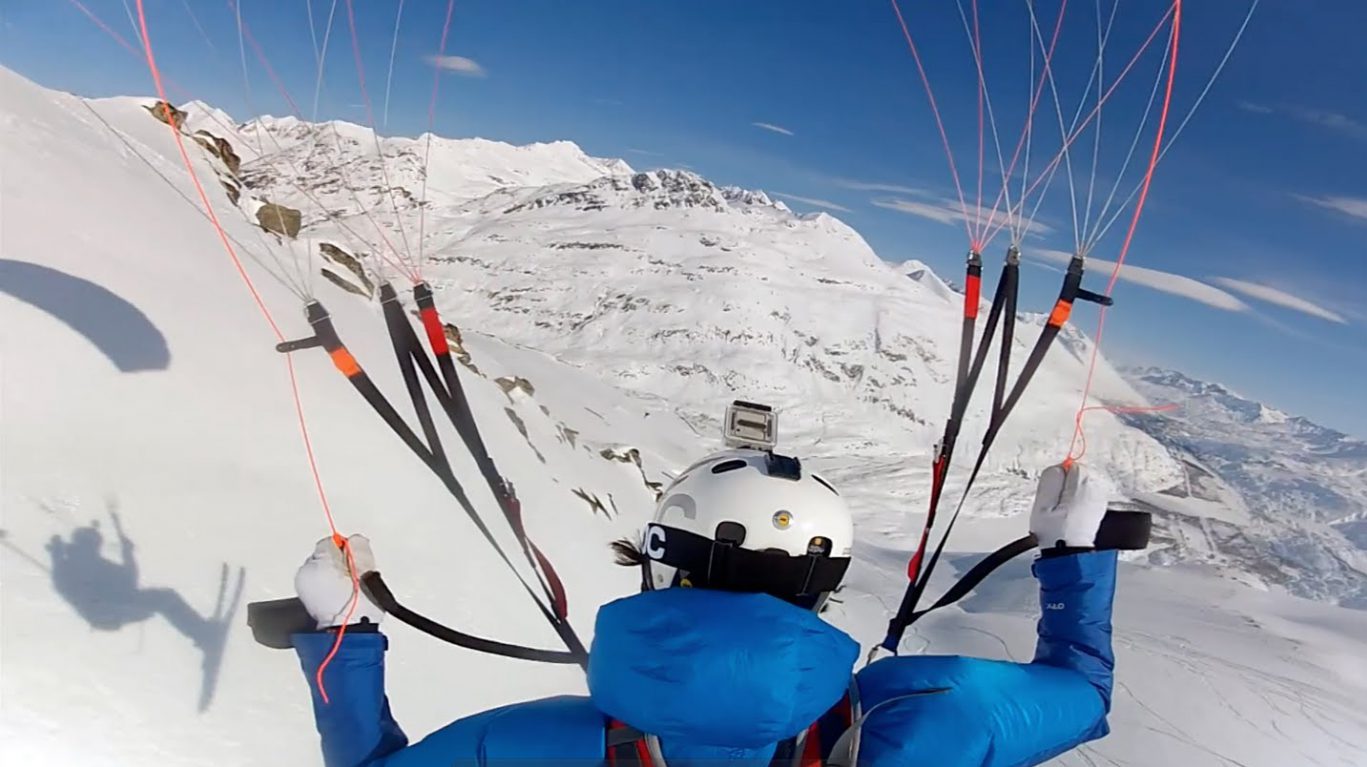
1. Speed flying
> Where it originated: France
> Equipment needed: Skis, parachute, helmet
If sitting by a warm fire with a drink during the cold winter months doesn’t interest you, there’s always speed flying. A combination of base jumping and skiing, speed flying should only be attempted by the most extreme thrill seekers. Speed flyers ski down to the edge of a cliff or sheer mountain edge, then leap off. Before landing, speed flyers deploy a paragliding-style parachute that allows them to glide to safety. Of all the extreme winter activities, speed flying is the wildest.
Sponsored: Want to Retire Early? Here’s a Great First Step
Want retirement to come a few years earlier than you’d planned? Or are you ready to retire now, but want an extra set of eyes on your finances?
Now you can speak with up to 3 financial experts in your area for FREE. By simply clicking here you can begin to match with financial professionals who can help you build your plan to retire early. And the best part? The first conversation with them is free.
Click here to match with up to 3 financial pros who would be excited to help you make financial decisions.
Thank you for reading! Have some feedback for us?
Contact the 24/7 Wall St. editorial team.
 24/7 Wall St.
24/7 Wall St. 24/7 Wall St.
24/7 Wall St. 24/7 Wall St.
24/7 Wall St.
